Planting for shaded areas
Resilient planting for light-limited conditions
Shaded areas in planting schemes can often feel like problem zones. These are the spaces where turf struggles, beds dry out quickly under tree canopies, and standard planting schemes often fail to establish well. Yet, with the right approach, shaded areas can become a real asset to a project. They offer opportunities for biodiversity, subtle seasonal interest, and year-round greenery when planted with species that are adapted to lower light levels.
Shaded areas occur in many places across commercial sites. They may be found in the quiet spaces beneath mature trees, in the narrow gaps between buildings, alongside tall fences or walls on north-facing boundaries, or beneath overhanging structures like carports or bin stores. These locations often have their own specific growing conditions. Some receive indirect light for part of the day while others may be in permanent shadow. The key to success in these areas is not to try to change them but to understand their conditions and work with them using shade-tolerant planting.
Understanding shade
Shade is not a single condition but a range of light levels that can vary dramatically depending on location, time of day, season, and surrounding structures. The type of shade a planting area receives determines which plants will thrive there. In commercial environments, where space is often dictated by architecture and infrastructure, it becomes especially important to assess shade accurately.
Full shade describes areas that receive little or no direct sunlight during the day. These include spaces beneath evergreen tree canopies, the base of north-facing walls, and areas permanently blocked from the sun by tall buildings or retaining walls. Full shade is often combined with dry soil conditions, particularly where mature trees draw moisture from the ground or where rainfall is limited due to building overhangs or dense canopies.
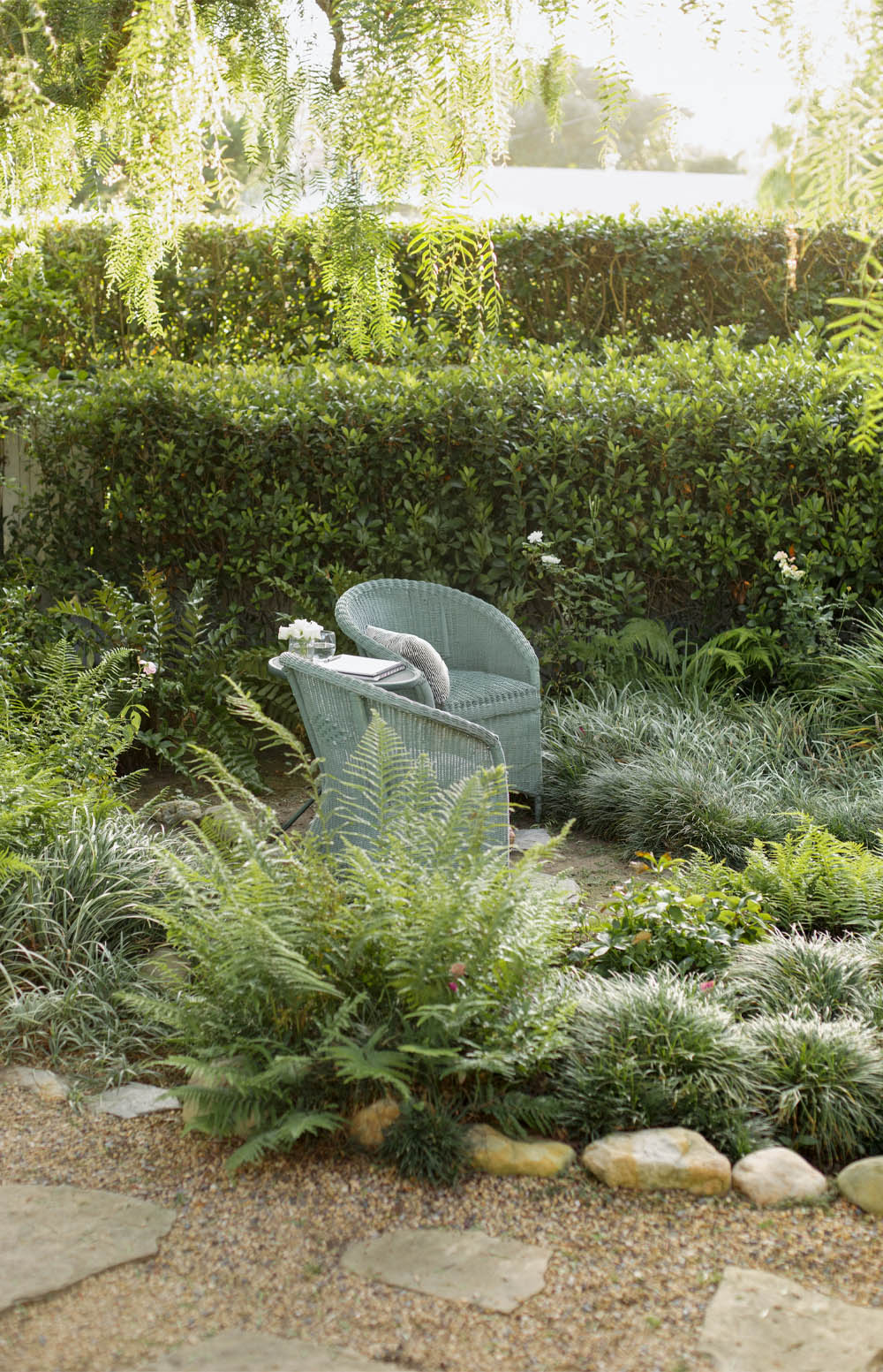
Partial shade applies to areas that receive between three and six hours of direct sunlight per day, often in the morning or late afternoon. These conditions are common along the east or west-facing sides of buildings and in open woodland edges where dappled sunlight filters through tree branches. In these situations, many plants can perform well, provided soil and water conditions are also suitable.
Dappled or filtered shade is created when light passes through a screen of foliage, such as beneath deciduous trees or sparsely planted shrub layers. These areas experience shifting patterns of sunlight and shadow throughout the day. While the light intensity is lower than in open sites, it can be surprisingly supportive of many species, particularly those with origins in woodland or forest margins.
Shade tolerance in plants is largely shaped by how they have evolved to use light efficiently. Most shade-loving species produce broader, thinner leaves with more chlorophyll, enabling them to photosynthesise even with limited light. Some have developed slower growth rates, focusing energy on deep root systems or spreading growth habits that help them compete in challenging environments. In the UK, many native plants, such as ferns, have adapted to woodland conditions, making them naturally suited to shaded urban spaces that mimic those environments.
When assessing shade on a site, it helps to consider more than just light levels. Tree roots can compete for water and nutrients, and tall structures may reduce air circulation, increasing the risk of fungal issues or damp. Understanding these layered conditions allows you to select the right plants for the right place, increasing the chances of success without excessive maintenance or intervention.
Top Plants for Shade
Not all shade-loving plants are the same. Some are better for dry, root-competitive soils beneath trees. Others thrive in moist, sheltered conditions or prefer the lighter shade of boundary fences. Selecting a diverse mix of structure, texture, and seasonal interest helps build a planting scheme that performs year-round and provides long-term benefits for both people and biodiversity. Here are some of our picks:
Vinca minor
commonly known as lesser periwinkle. A low-growing, evergreen groundcover plant with dark green, glossy leaves. It spreads steadily by creeping stems and is well-suited to dry, shaded soils under trees or along building edges. Produces violet-blue flowers in spring that offer early nectar for pollinators. Needs very little maintenance once established and is ideal for suppressing weeds in hard-to-reach corners.
Geranium macrorrhizum
UK native and a reliable choice for dry shade. Its aromatic, deeply divided leaves form an attractive low mound that holds shape throughout the season. Produces pink or magenta flowers in late spring and early summer, bringing a soft splash of colour to shaded borders. Particularly effective under deciduous trees, where it can benefit from spring light before the canopy fully develops.
Sarcococca confusa
Commonly known as sweet box, a compact evergreen shrub with a tidy growth habit and glossy, deep green leaves. Produces small, white, highly fragrant flowers in winter, followed by glossy black berries. Tolerates full shade exceptionally well and is perfect for planting along shaded pathways, near entrances, or in courtyards where year-round structure and seasonal scent are welcome.
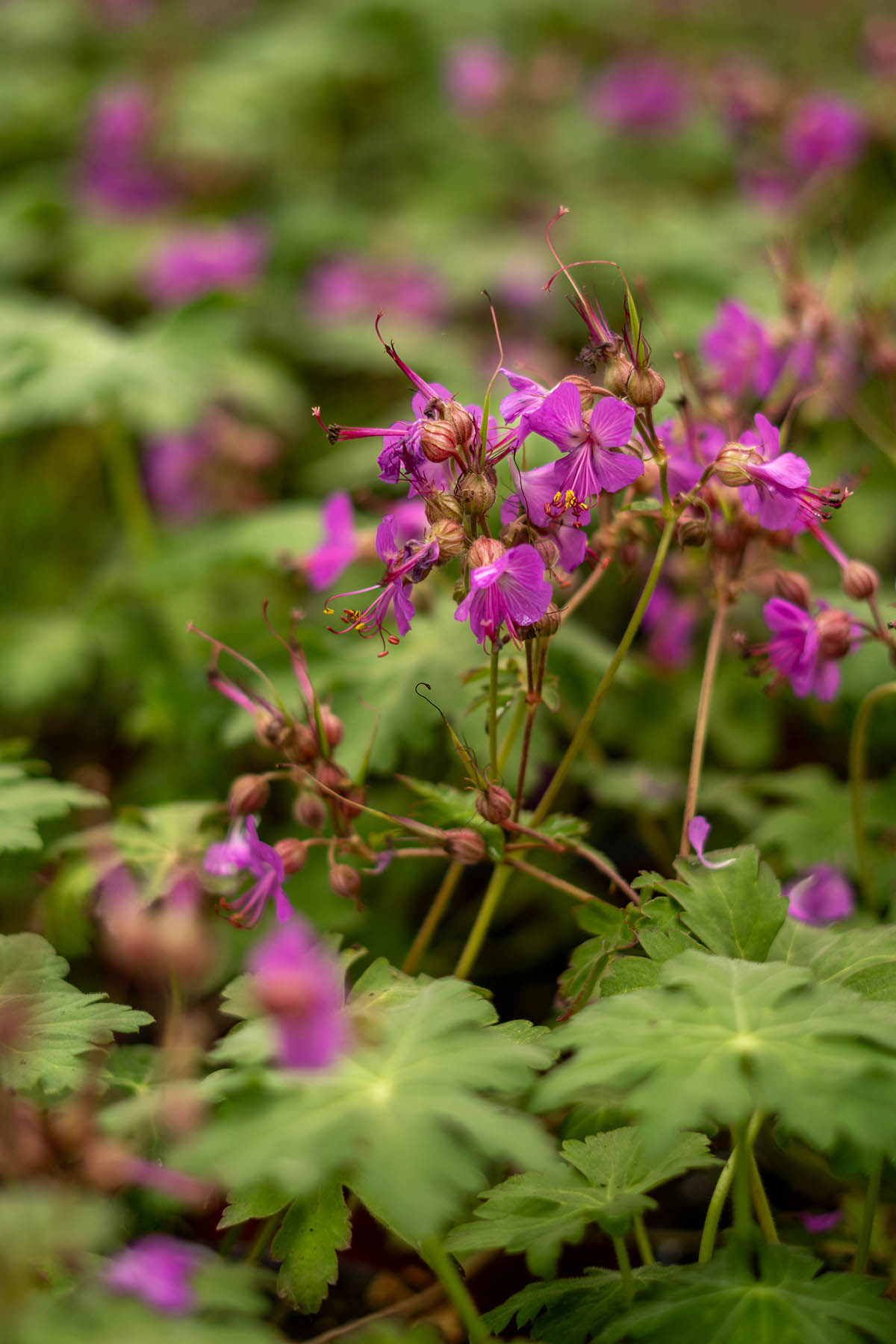
Geranium macrorrhizum
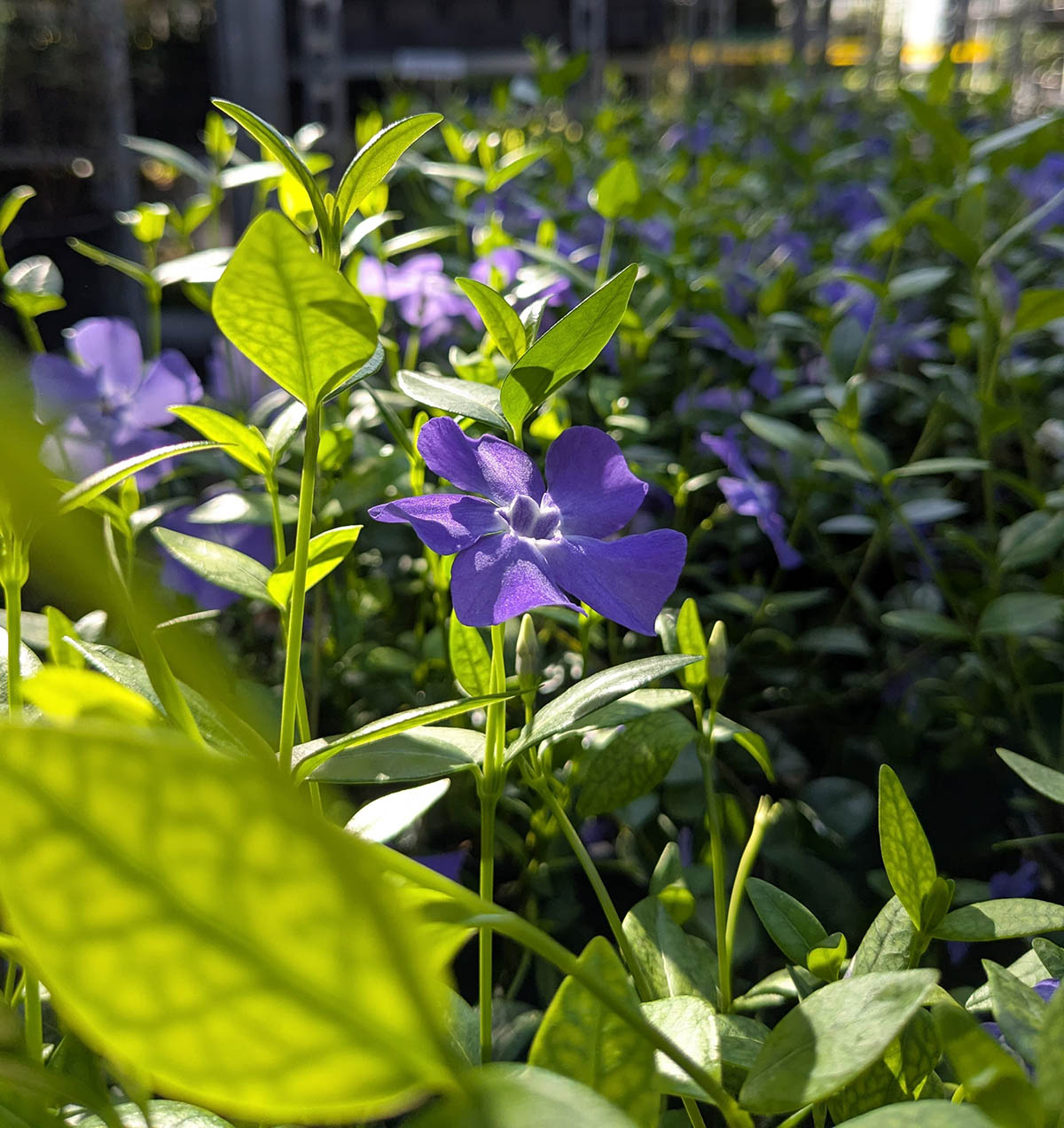
Vinca minor
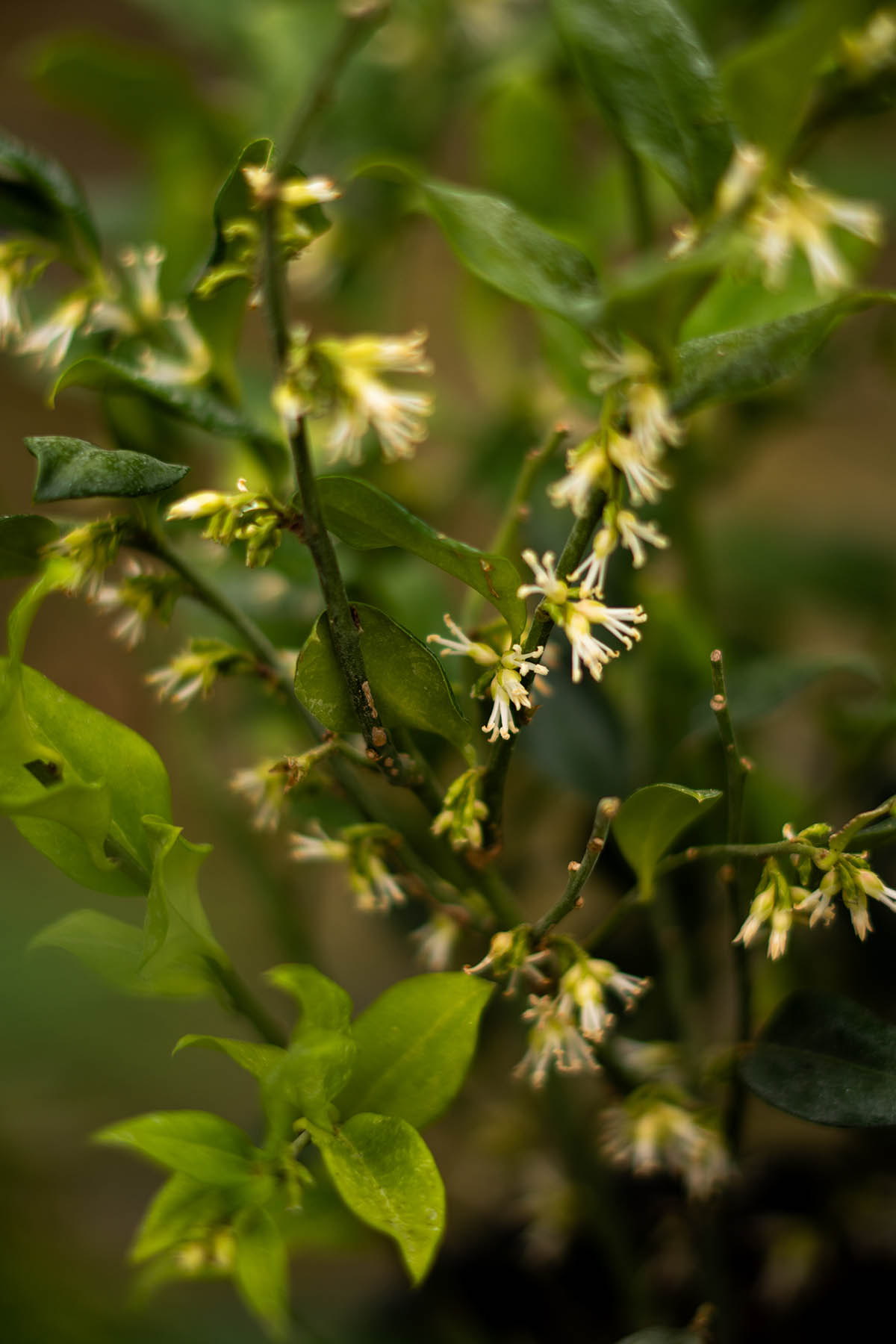
Sarcococca confusa
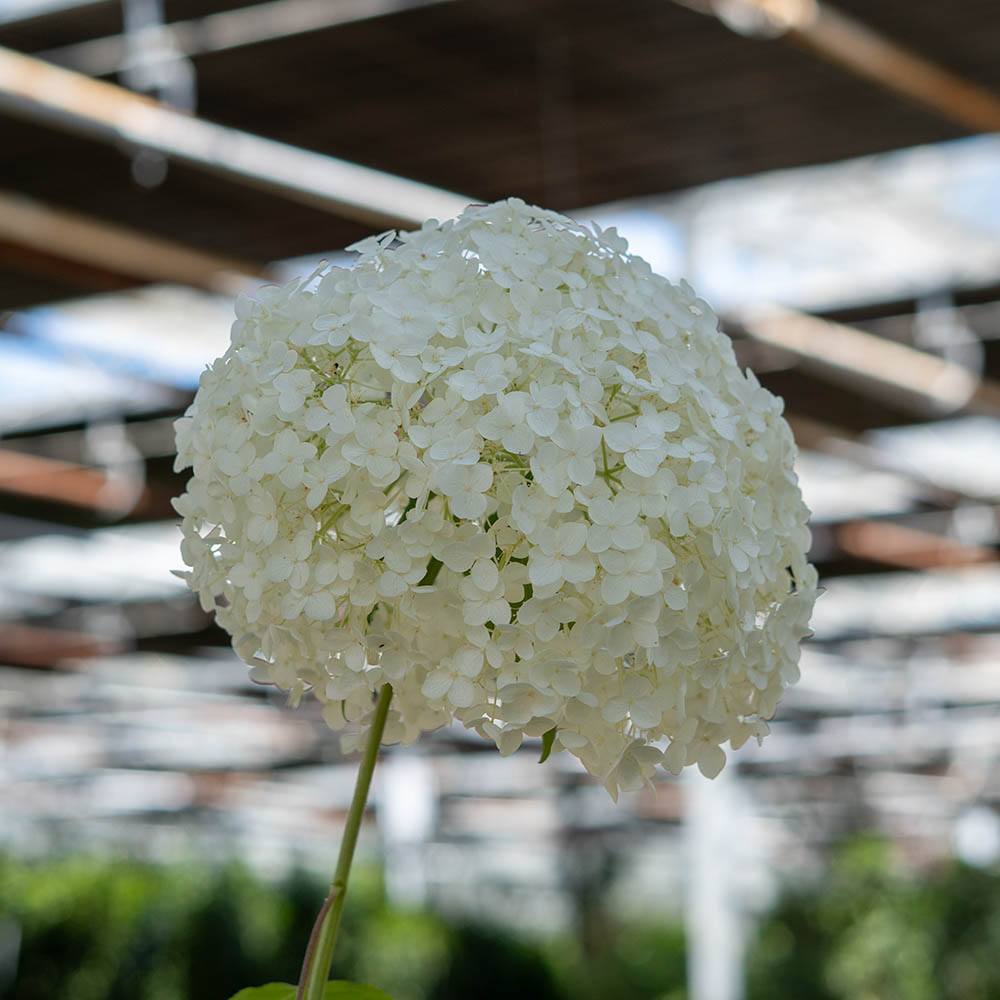
Hydrangea arborescens ‘Annabelle’
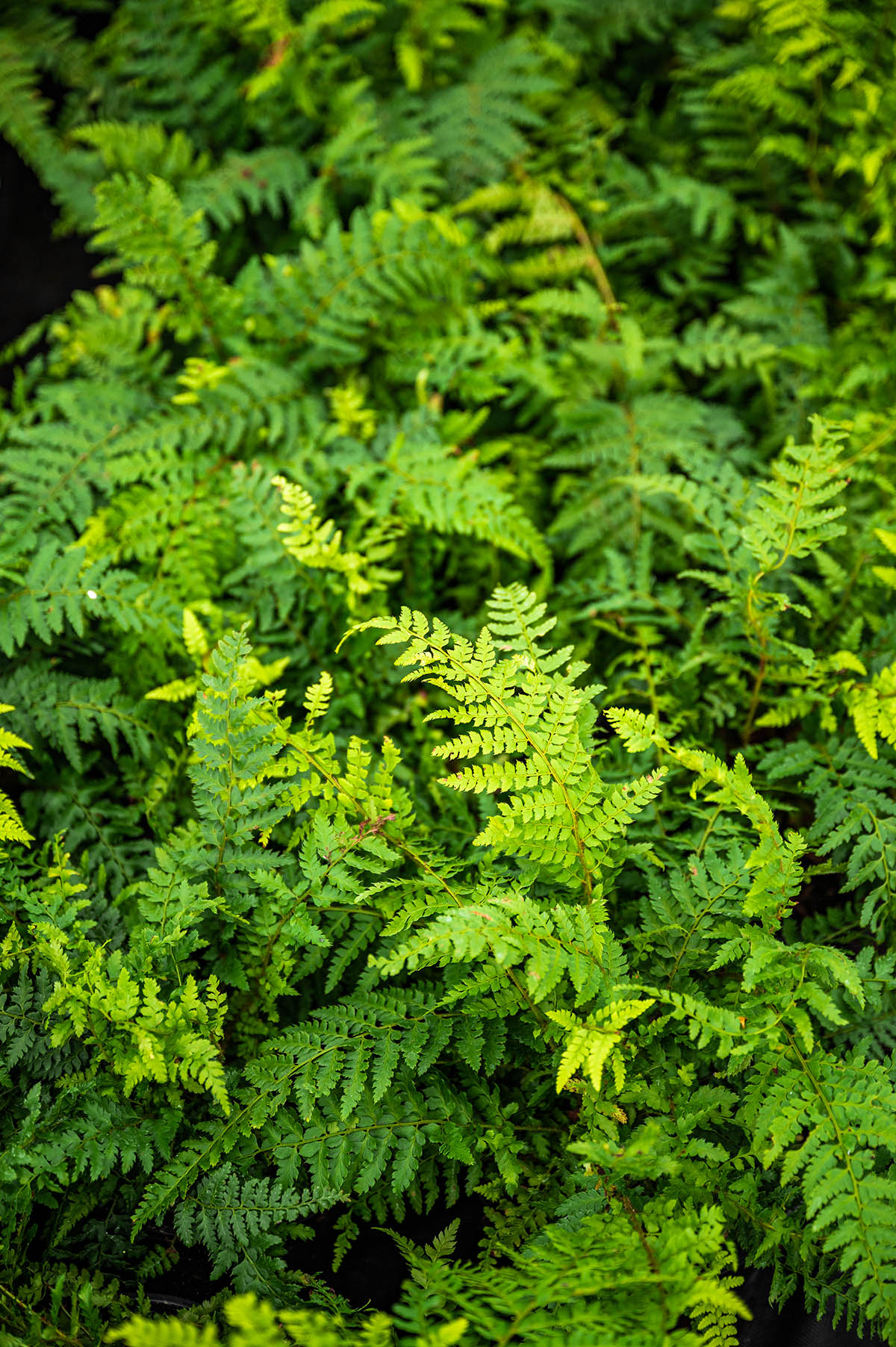
Dryopteris filix-mas
Hydrangea arborescens ‘Annabelle’
Produces a dramatic summer display with large, rounded white flower heads and lush green foliage. Though not evergreen, its woody stems provide structure in winter and respond well to annual pruning. Prefers moist, fertile soil and partial shade, making it a standout feature in larger beds or mixed shrub borders sheltered from full sun.
Dryopteris filix-mas
Known as male fern and is UK native. A tough, native fern that grows upright with mid-green, architectural fronds. Excellent for filling shady, naturalistic planting areas where it can soften hard edges and add a sense of depth. Once established, it is tolerant of dry conditions and requires minimal care, thriving beneath trees or beside walls in shaded courtyards.
Polystichum setiferum
Brings a lighter, feathery texture to the shaded garden. Finely divided fronds remain semi-evergreen through mild winters, creating movement and visual interest even in low-light conditions. Performs best in dappled or full shade and pairs well with woodland perennials or other ferns to create layered planting.
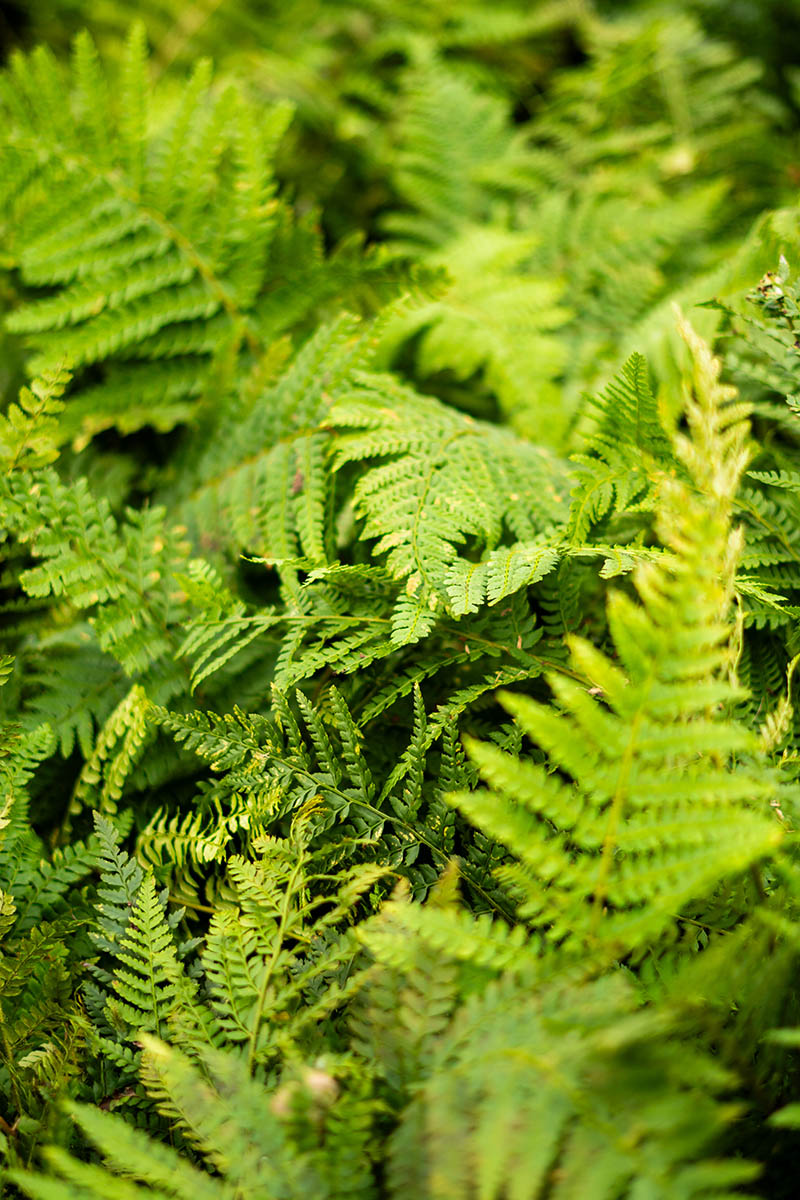
Polystichum setiferum
Hedera helix
Known as common ivy, a UK native climber that is invaluable in shaded conditions. Can be used to cover walls, fences, or ground in difficult corners. Evergreen foliage provides year-round coverage and habitat for wildlife. Its flowers, though modest, provide late-season nectar source for insects. Fast-growing and should be managed carefully, but selected cultivars offer more controlled growth for tighter spaces.
Hydrangea anomala subsp. petiolaris
Self-supporting woody climber that is particularly well-suited to north or east-facing walls. Slow to establish but provides lush, heart-shaped foliage and flat white flower heads in early summer. Clinging aerial roots enable it to grow without additional support, and once mature, it creates an impressive display on otherwise bare shaded surfaces.
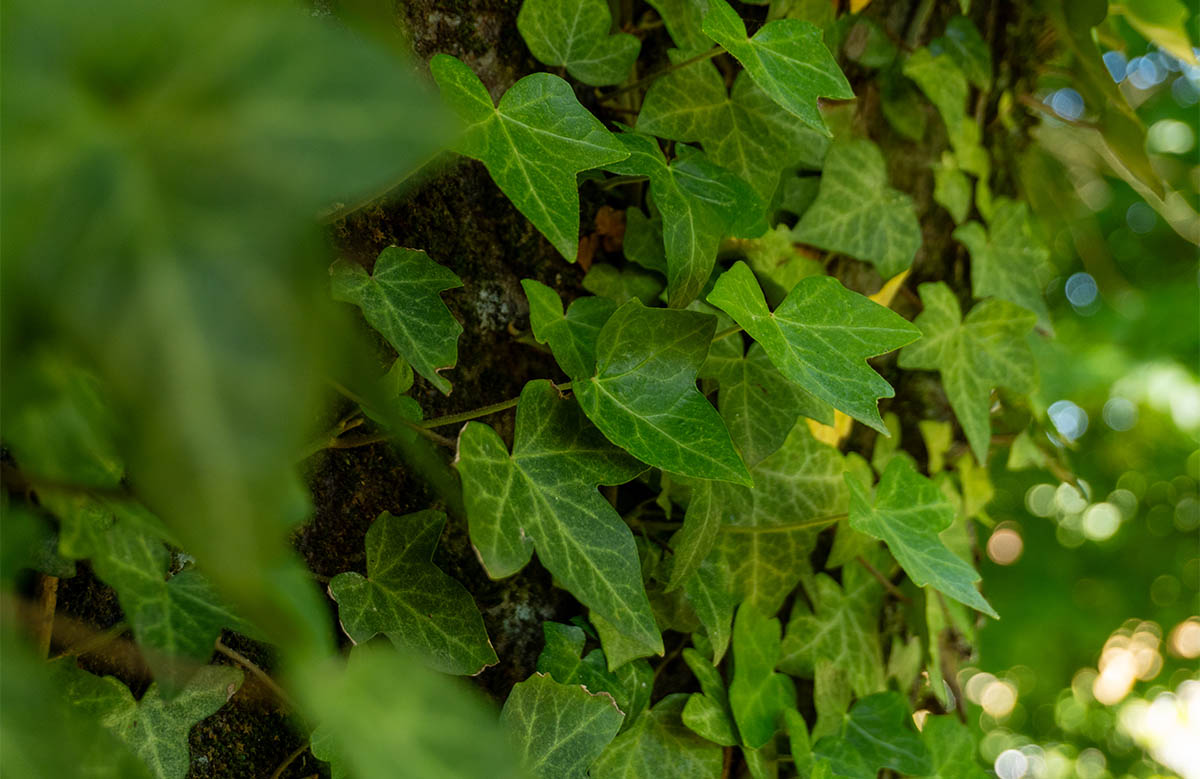
Hedera helix
Planting and Maintenance Tips for Shade
Planting in shaded areas can be challenging. Understanding how the conditions affect soil, water, and plant behaviour is crucial to long-term success.
Soil in shaded areas is often compacted and nutrient-poor, especially beneath mature trees or along well-trodden edges. Before planting, it’s essential to improve soil structure with generous amounts of organic matter. Incorporating compost or leaf mould helps increase water retention, improve aeration, and provide nutrients in areas where competition from roots is high.
Shaded soils can be surprisingly dry, particularly where trees or buildings limit rainfall. During the establishment phase, regular watering is essential, even if the surface appears damp. Pay attention to planting beneath evergreen trees or on raised, shaded banks, where soil can dry out quickly and invisibly. Once established, many shade-tolerant plants can manage with minimal water, but initial support is key.
Dry shade is one of the most demanding conditions for planting. Choosing species that naturally tolerate it, such as geraniums, helps reduce failure and future maintenance. Where possible, group plants with similar moisture needs together and use groundcover to retain soil moisture and suppress weeds.
Avoid overcrowding plants in shaded areas. Light levels are already limited, and poor air circulation can lead to mildew or rot. Allow for adequate spacing between plants, especially under trees or close to walls, and avoid layering too many into the same space. This encourages healthier growth and reduces long-term management.
Mulching is especially beneficial in shaded conditions. Applying an annual mulch of bark, leaf mould, or well-rotted compost in spring helps mimic the natural forest floor. It supports soil structure, reduces evaporation, and suppresses weed growth, all while contributing to the soil’s organic matter levels over time.
Shady spaces are often overlooked or seen as a design problem, but with the right understanding and plant selection, they can become some of the most rewarding and resilient parts of a landscape. From structural evergreens to delicate woodland groundcovers, there is a wide range of species that bring life and interest to low-light areas.
If you would like more help in choosing plants for your projects, get in touch with the G Team today.

